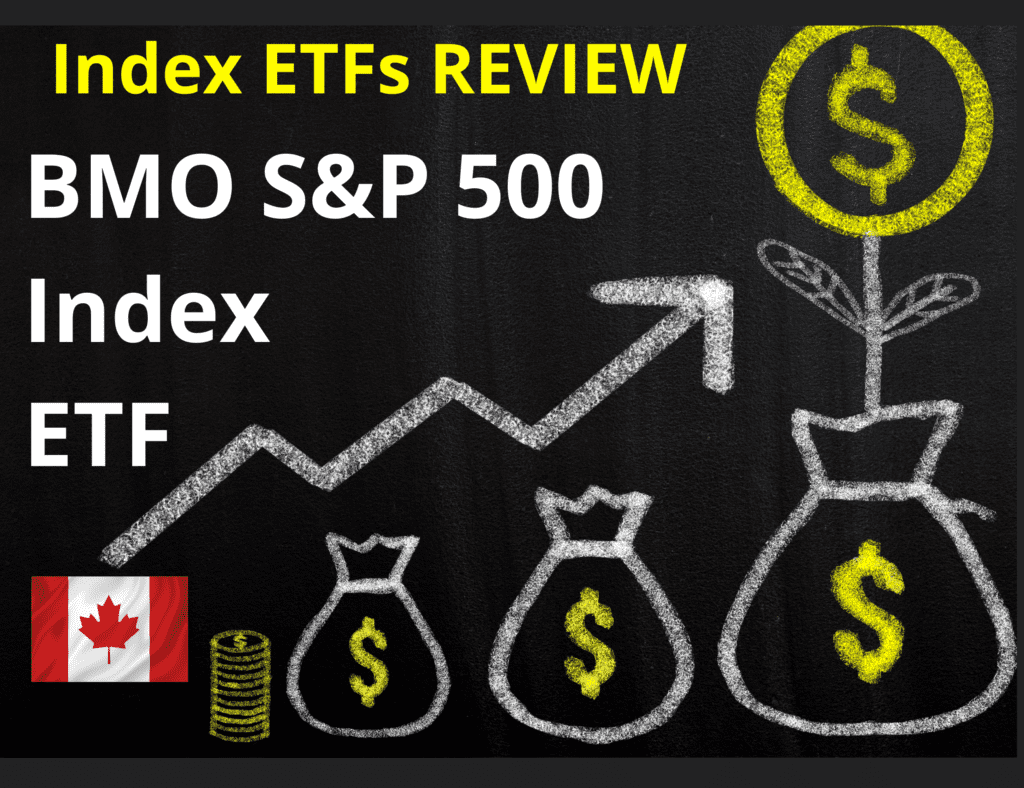Investing in index ETFs has become a go-to strategy for many investors looking for a straightforward and cost-effective way to build wealth. Among the many index ETFs available, the BMO S&P 500 Index ETF, or ZSP, stands out as one of the most popular in Canada. In this post, we’ll break down why ZSP is worth considering for your portfolio, discussing the benefits and risks, along with its fees, historical performance, and how it compares to similar funds.

What is an Index ETF?
An Index ETF, like ZSP, is designed to track the performance of a specific market index. The goal is simple: to replicate the returns of the index by buying all (or most) of the securities that make up that index. This gives investors exposure to a wide range of stocks or bonds with just one purchase.
One of the key advantages of index ETFs is their low cost. Since these funds are passively managed—meaning they don’t require a team of managers to select individual stocks—fees are usually much lower than those for actively managed funds.
The Benefits of ZSP
1. Low Fees
One of the main reasons to consider ZSP is its very low expense ratio. At just 0.09%, this means that for every $10,000 you invest, you’re only paying about $9 per year in fees. This is much lower than most actively managed funds, where fees can sometimes reach over 1%. Lower fees help preserve more of your investment returns over time.
2. Exposure to the S&P 500
ZSP tracks the S&P 500 Index, which includes 500 of the largest companies in the U.S. These companies are chosen by a committee based on factors like market size, liquidity, and industry representation. By investing in ZSP, you gain exposure to well-established companies across a broad range of industries, including technology, healthcare, and finance.
Historically, the S&P 500 has delivered an average annual return of around 10% over the long term. This kind of performance makes it a solid foundation for any portfolio, especially for investors looking to benefit from the growth of large U.S. companies.
3. Long-Term Growth Potential
ZSP’s greatest strength lies in its ability to deliver long-term growth. While market downturns are inevitable, holding an investment like ZSP over the long haul and reinvesting dividends can lead to substantial gains.
For example, an investor who put $20,000 into a fund tracking the S&P 500 back in 1985 and held it until today would have seen that investment grow to over $1.3 million, assuming dividends were reinvested. While past performance doesn’t guarantee future results, it’s a testament to the power of long-term investing in a diversified fund like ZSP.
4. Simplicity
Another advantage of ZSP is its simplicity. Rather than picking individual stocks, ZSP allows you to invest in a wide array of companies with one purchase. This makes it a great option for investors who want exposure to the U.S. market without the hassle of stock-picking.
The Risks of ZSP
While ZSP offers many benefits, it’s important to understand the risks involved.
1. Market Risk
Since ZSP tracks the S&P 500, it’s heavily influenced by the performance of the U.S. stock market. If the market declines, ZSP will follow suit. This means that during times of economic uncertainty or downturns, the value of your investment could drop.
2. Currency Risk
For Canadian investors, currency risk is another factor to consider. ZSP is denominated in Canadian dollars, but it holds U.S. stocks. If the Canadian dollar strengthens against the U.S. dollar, your returns from ZSP could be lower. This currency fluctuation can add a layer of volatility to your investment.
3. Lack of Active Management
While the low fees of ZSP are a major benefit, the lack of active management could also be seen as a downside. Active fund managers aim to outperform the market by picking stocks they believe will do better than average. ZSP, on the other hand, simply mirrors the S&P 500, so you won’t get the benefit of potential outperformance during market downturns.

ZSP-U vs ZSP which one to choose
If you are uncertain between a hedged, unhedged or US $ ETF, please refer to the table below:
| Scenario 1: Value of Canadian $ appreciated | Scenario 2: Value of Canadian $ depreciated | |
| Non hedged ETF | Index return Minus foreign exchange loss | Index return Plus foreign exchange gains |
| Hedged ETF | Index return | Index return |
| US $ ETF | Index Return The investor chooses when to convert | Index Return The investor chooses when to convert |
MER and Asset under management
| Name | MER | AUM | |
| VFV | Vanguard S&P 500 Index | 0.08% | 5,310 |
| XUS | Ishares Core S&P 500 Index | 0.10% | 4,616 |
| ZSP | BMO S&P 500 Index | 0.09% | 10,450 |
VFV has one of the lowest Management Expense Ratio in its category at 0.08%. The difference with other similar ETFs remain really small though.
Historical performance ZSP Stock
Updated daily
Since all three ETFs track the same index and it’s understandable they will have very close performance.
ZSP ETF Holdings
| Weight (%) | Name | Sector |
|---|---|---|
| 5.98% | APPLE INC | Information Technology |
| 5.54% | MICROSOFT CORP | Information Technology |
| 2.30% | AMAZON.COM INC | Consumer Discretionary |
| 1.73% | BERKSHIRE HATHAWAY INC | Financials |
| 1.63% | ALPHABET INC | Communication Services |
| 1.57% | UNITEDHEALTH GROUP INC | Health Care |
| 1.46% | JOHNSON & JOHNSON | Health Care |
| 1.45% | ALPHABET INC | Communication Services |
| 1.42% | EXXON MOBIL CORP | Energy |
| 1.23% | JPMORGAN CHASE & CO | Financials |
ZSP Sector allocation
- Information Technology 26.54%
- Health Care 15.09%
- Consumer Discretionary 11.76%
- Financials 10.97%
- Communication Services 8.09%
- Industrials 7.85%
- Consumer Staples 6.90%
- Energy 4.51%
- Utilities 3.08%
- Real Estate 2.72%
- Materials 2.49%
Conclusion: Is ZSP Worth It?
For Canadian investors looking for a simple, cost-effective way to invest in U.S. stocks, ZSP is an excellent choice. With its low fees, exposure to 500 of the largest U.S. companies, and long-term growth potential, it offers a solid foundation for most portfolios. However, like any investment, it’s important to be aware of the risks, including market volatility and currency fluctuations.
Ultimately, ZSP’s strengths lie in its simplicity and cost efficiency. If you’re aiming for long-term growth and want to take advantage of the power of compounding over time, ZSP could be a great addition to your investment strategy.

